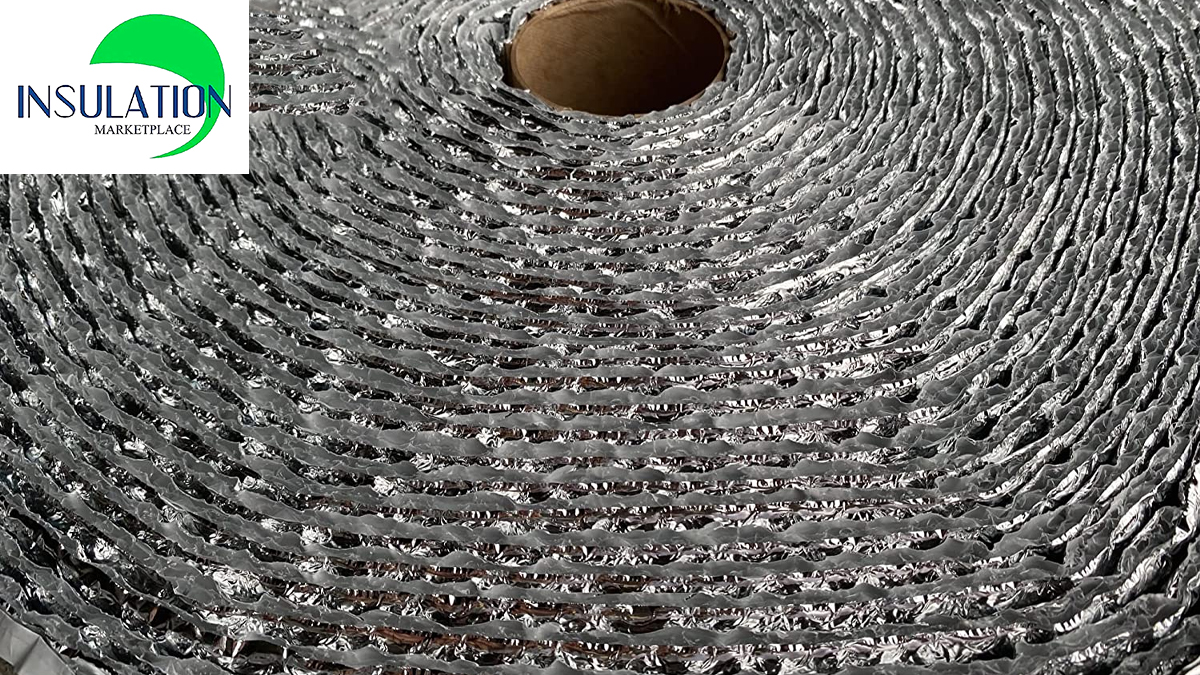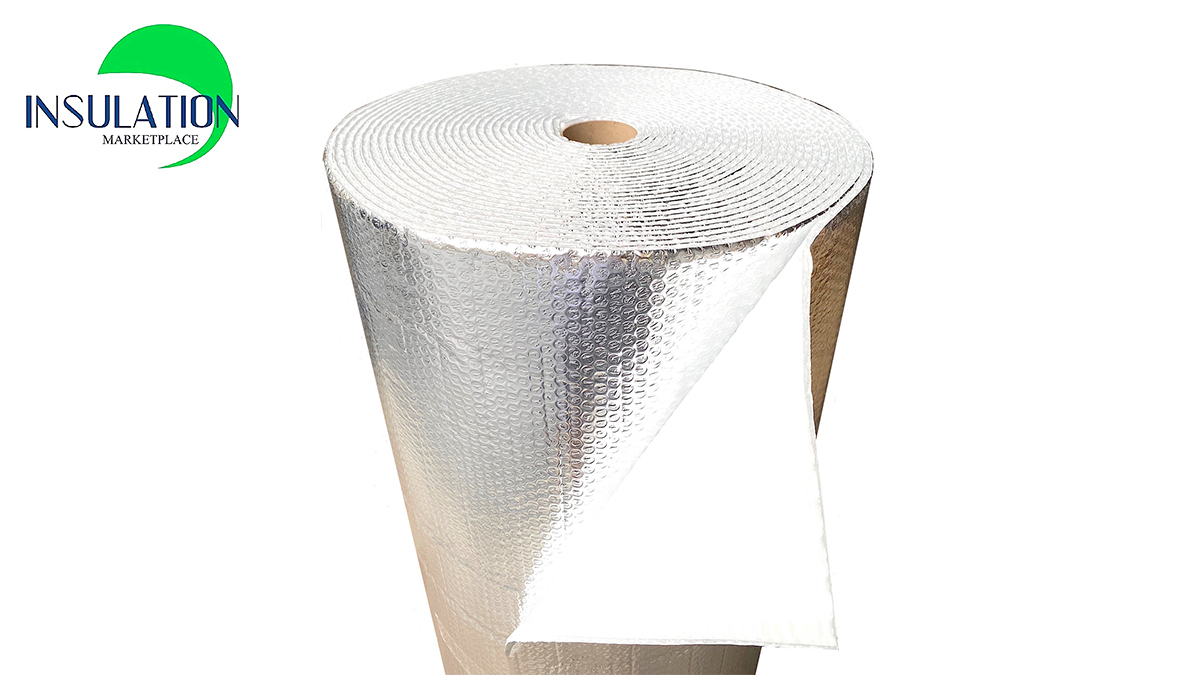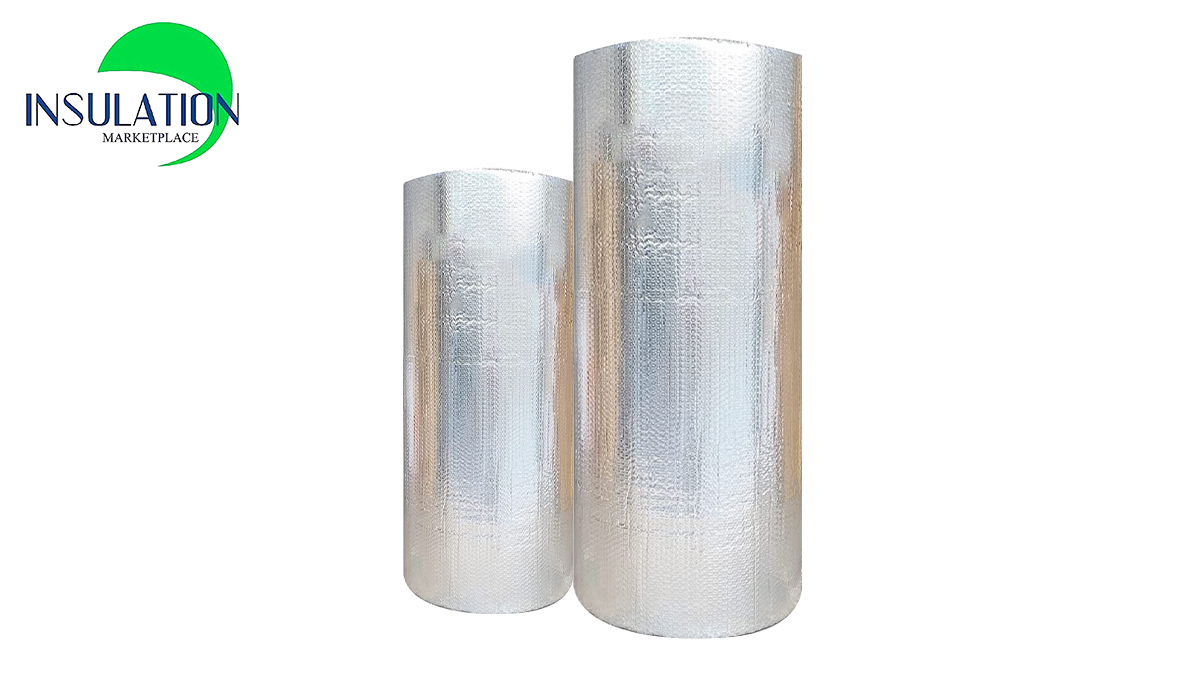What is the R-Value of Bubble Wrap Insulation?
Amazingly, an accident led to the discovery of bubble wrap as an insulation solution. Are you struggling with selecting bubble wrap? If so, let’s consider the R-value of bubble wrap insulation first. Often overlooked, this value is a relatively exact number related to the level of insulation. This can help you to make informed decisions to optimize your home’s energy savings.
Our blog will provide all the details about R-value of bubble wrap insulation and explore its surprising benefits. Right now, let’s keep reading to find out!

What is Bubble Wrap Insulation?
Bubble wrap insulation is an insulation design of reflective layers of foil and air bubbles sandwiched between the layers. Thanks to its flexible ability to diminish heat gain or loss, it can be used in winter and summer to improve your home’s insulation system.
Basically, bubble wrap works as a radiant barrier, with the ability to reduce the radiant heat to control temperature. While the air bubble acts as a barrier that traps heat, the layers support the air bubble to create small air pockets for thermal insulation.
There are currently two types of bubble wrap, including:
- Single bubble: It contains one bubble layer, which is ideal for narrow spaces, small-scale projects, and temporary insulation.
- Double bubble: It includes two bubble layers, which make it reachable for long-term applications, large-scale projects, and thermal-breaking solid requirements.
If so, what should you do to select the proper bubble wrap insulation? The answer depends on your requirements and budget. Both single and double bubbles effectively increase your home’s energy efficiency and reduce radiant transfer.
What is R-Value of Bubble Wrap?
Although bubble wrap’s performance varies depending on various factors, it is directly related to its R-value. The R-value of bubble wrap is a measure of its ability to break heat flow. The higher the R-value, the greater the bubble wrap’s efficiency.
It has been proved that the number of bubbles reflects the level of the bubble wrap R-value. This partly contributes to how you decide to select a proper insulation solution for your home system. In particular:
- Single bubble: Offers lower R-value and is suitable for areas that are not too cold or too hot.
- Double bubble: Offers higher R-value and is suitable for areas that require good and substantial insulation.
In fact, the double bubble R-value nearly leads to better insulation performance. However, the Food and Agriculture Organization shows that “the R-value increases in direct proportion to the increase in thickness of the insulation material.” Therefore, it’s important to choose bubble wrap with the appropriate thickness to have the R-value corresponding to the needs.
The R-value of bubble wrap is generally between 1.0 and 1.1, with an average thickness of ⅜ or less. However, some manufacturers offer other values by clarifying their material contents and conducting reliable product testing before releases.

Benefits of Bubble Wrap Insulation
Now that you have had an in-depth understanding of R-value of bubble wrap, it’s time to discover 5 potential advantages you get when installing bubble wrap.
Maintaining Cool Temperatures
First and foremost, installing bubble wrap is one of the best solutions for keeping a space cool. The bubble wrap’s reflective layer offers good heat-conducting ability, aiming to decrease heat and temperature control.
Durable and Versatile
Thanks to the bubble wrap’s simple design, it is considered more long-lasting than other insulation products. More impressively, bubble wrap doesn't nearly degrade over time and is immune from moisture absorption. All lead to the superior to eternal damage and a fantastic utility time.
Simple Installation
If you find it difficult to install insulation products, start with bubble wrap. For your setups, you only need to prepare several simple tools (e.g., scissors, adhesive spray) and a piece of bubble wrap.
However, the most important thing to consider is taking the proper measurements of the area you want to apply bubble wrap insulation to. If you are still confused about estimating, follow the manufacturers’ instructions to ensure the best outcome.
Slim and Lightweight
Bubble wrap is famous for its slim and lightweight characteristics, which make it an outstanding choice for various insulation applications. Therefore, you can flexibly use bubble wrap, whether in storage, moving, or installation.
Despite its thin form, bubble wrap delivers a strong thermal-absorbing performance, contributing to your home’s energy efficiency. This is an affordable solution for adding bubble wrap DIY.
Safe and Non-Toxic
Most manufacturers prefer using non-toxic and carcinogenic materials for bubble wrap. This makes it safer to handle without any safety instructions. Over time, there will not be moisture absorption, leading to allergic issues; thus, you don’t need to worry about long-term risks.
Check out our Reflective Bubble Insulation to find the best fit for your demands.

Trust Insulation Marketplace for Quality Insulation Solution
Understanding the R-value of bubble wrap is important to selecting the proper products for your space's insulation improvement. More importantly, whether you prefer a single or double bubble, the different benefits of bubble wrap will help you achieve cost savings and comfort.
At Insulation Marketplace, you can find top-rated insulation products like SmartFOIL, SmartSHIELD, and DIY insulation kits designed to ensure the best insulation performance.
Have questions or need insulation advice? Call us at 786.202.0704 or send an email.
FAQs on Bubble Wrap Insulation
Is Bubble Wrap a Good Insulator?
Absolutely Yes. Bubble wrap is made from reflective layers and air bubbles, effectively creating a barrier and absorbing heat transfer. This leads to an ideal insulation performance and temperature regulation. Additionally, bubble wrap is relatively cheap compared to other insulators, making it reachable to many people.
Can I insulate my shed with bubble wrap?
Yes. Insulating your shed with bubble wrap is the most straightforward approach. In fact, you can find a large amount of bubble wrap at cheap prices in any hardware or DIY store. Additionally, you can easily set up bubble wrap at home without any technical support from professionals.




